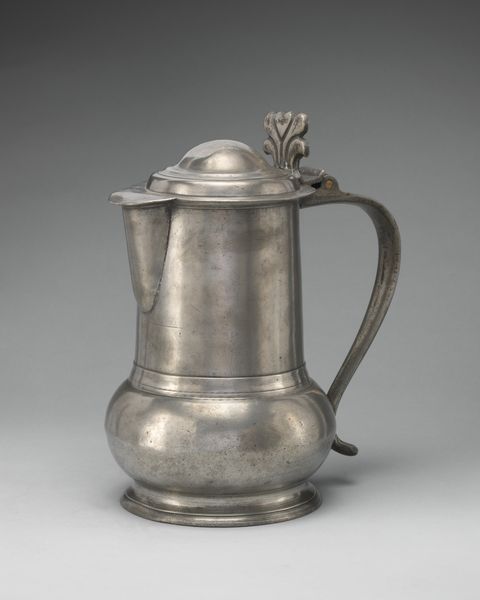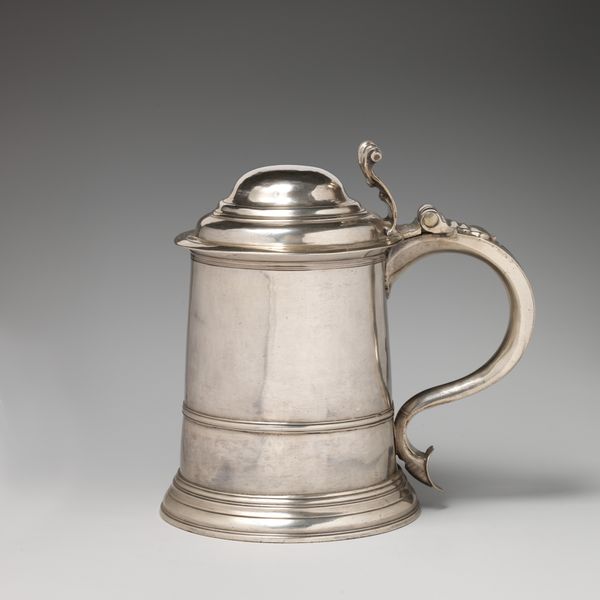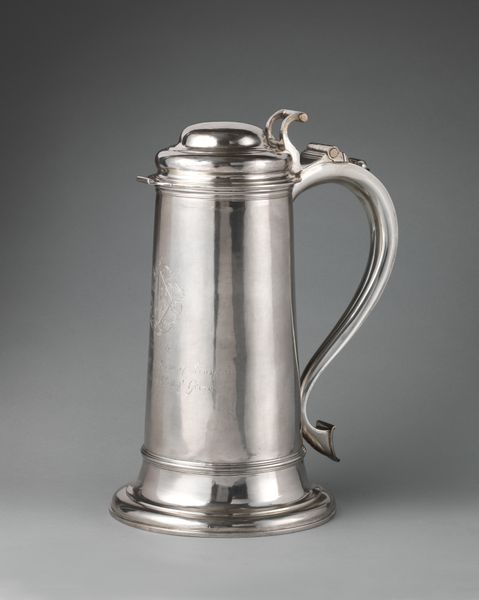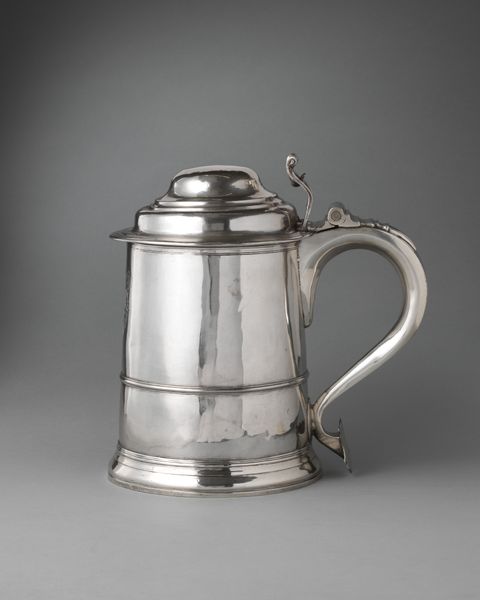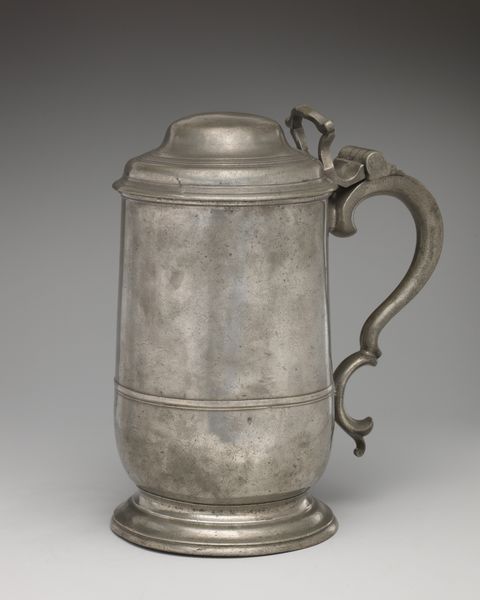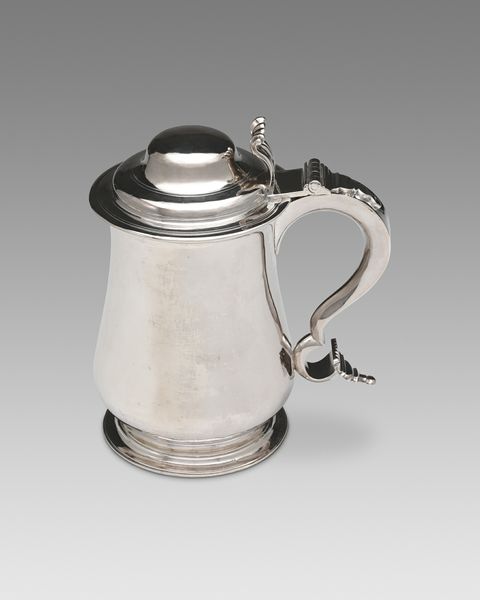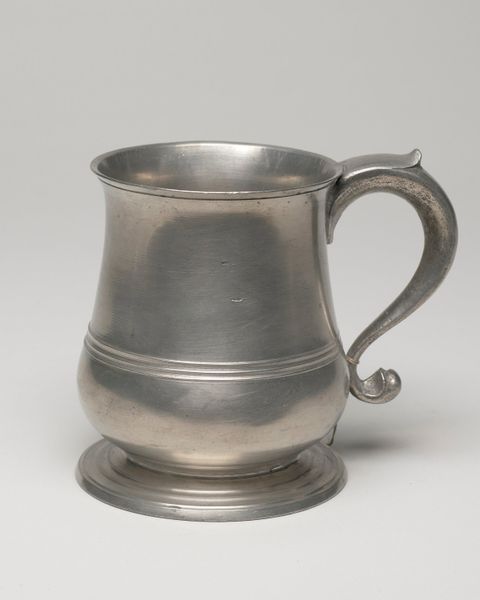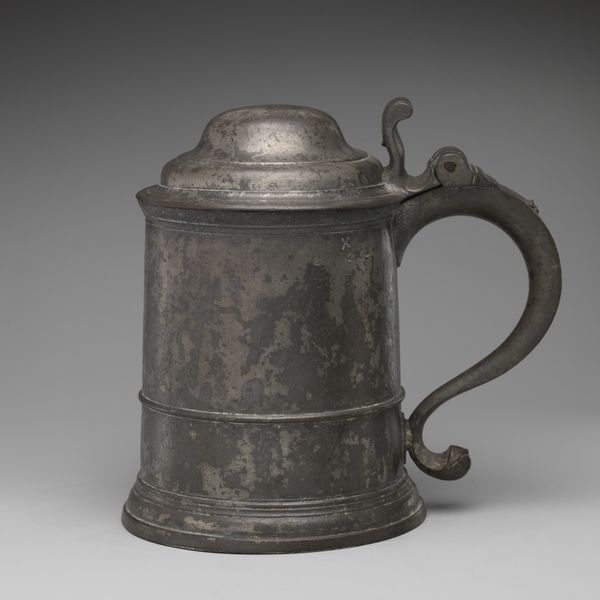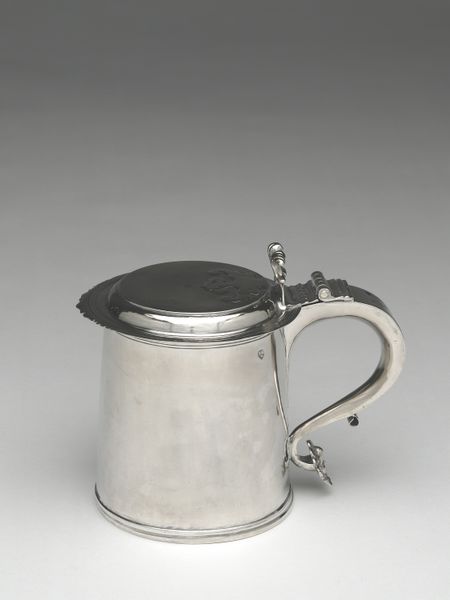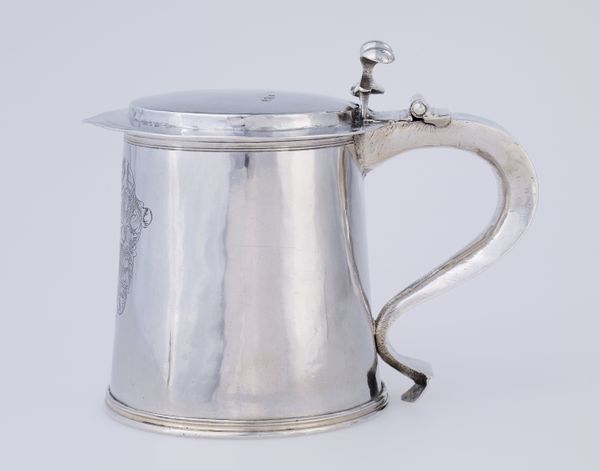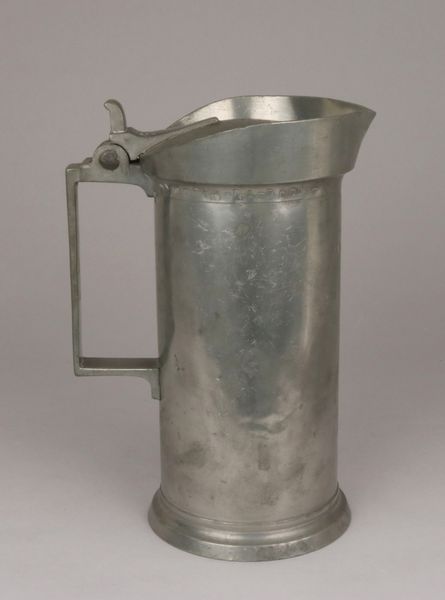
metal, sculpture
#
metal
#
sculpture
#
decorative-art
Dimensions: Overall: 11 5/16 × 8 9/16 in. (28.7 × 21.7 cm)
Copyright: Public Domain
Curator: My initial feeling is one of sturdy utility. There's a satisfying simplicity to it, a kind of austere beauty in its functionality. Editor: Indeed. We're looking at a flagon crafted from metal, dating back to somewhere between 1697 and 1707. The maker is recorded as William Wood and the piece currently resides at the Metropolitan Museum of Art. What story do you suppose it could tell us? Curator: It feels imbued with the echoes of communal meals, social gatherings, even religious rites. Flagons such as this weren't just objects; they were integral to the social and ceremonial rituals that bound communities together. The cool feel of the metal in your hand, the weight of its contents…they all contributed to the experience. Editor: And in that era, think of the statement this object makes. Owning something of quality like this, well-crafted and durable, signals a level of social standing. It implies stability, access to resources. It also reflects prevailing tastes: the rising middle class seeking refined objects but perhaps not the over-the-top ornamentation of the aristocracy. It is functional and aesthetically appealing. Curator: Notice how even in its simplicity, the flagon presents certain archetypal forms: the vessel, the container of sustenance. From the Holy Grail to humble mugs, vessels have always held a deep significance for the human psyche, representing nurturing, hospitality, and the sharing of life's essentials. Editor: Looking at it now, I’m wondering about its original context, outside of grand meals and events. Where was it made? Who was its target audience? Knowing these factors would shed even more light on its significance as a historical artifact. And were the other such objects associated with this form or region? What meaning may have emerged? Curator: Precisely. It seems these types of objects gain power from existing and becoming entrenched in social and communal behavior, thus developing and informing group culture. The flagon has a long tradition to tell through symbolism. Editor: Considering all of these levels reveals how art isn’t just about the ‘high arts’, that we often consider, it’s intertwined with the mundane details of human society. And it reflects the changing priorities and sensibilities across history. It makes you think. Curator: Definitely, everyday objects can often offer profound insights. Editor: And even utilitarian forms can hold a potent blend of functional, aesthetic, and cultural value.
Comments
No comments
Be the first to comment and join the conversation on the ultimate creative platform.
